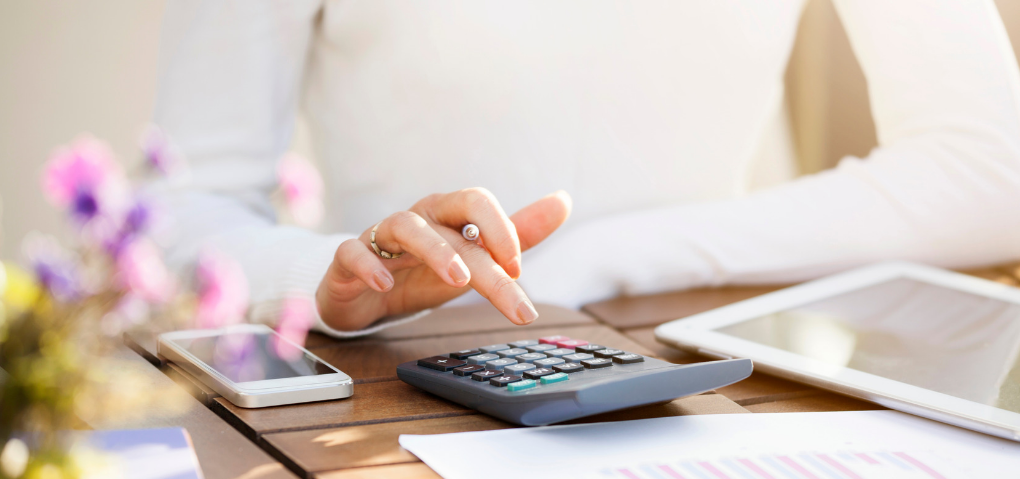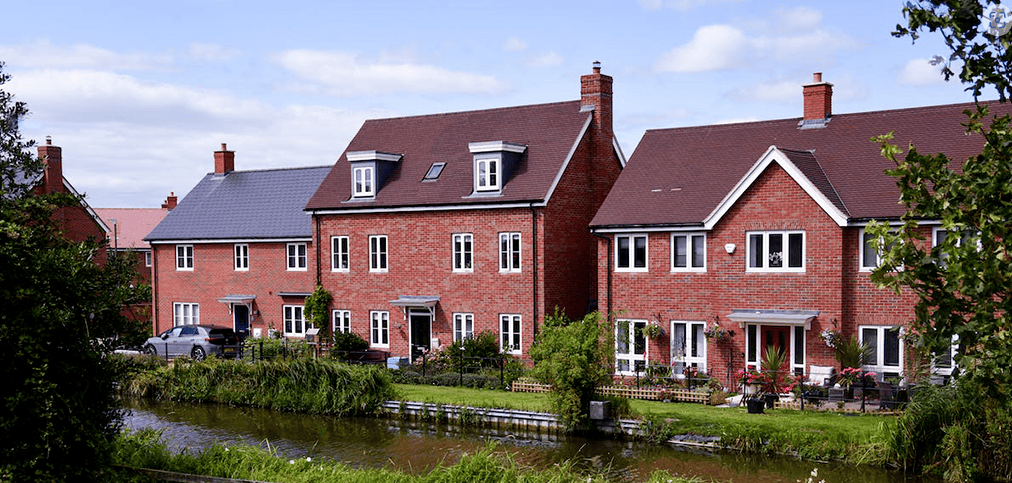Are you thinking about becoming a buy to let landlord? Joining the club isn’t easy - there’s a lot to learn. In our buy to let guide, you’ll find all the information you need on financing your buy to let purchase, the tax implications and your responsibilities as a landlord.
The Topics Covered in this Article Are Listed Below:
- What Is Buy to Let?
- Buy to Let Mortgages Explained
- How to Get a Buy to Let Mortgage
- Do You Want Capital Growth or Good Rental Returns?
- Buy to Let Mortgage Fees, Costs and Deposit
- Best Areas for a Buy to Let Property
- How to Choose the Right Buy to Let Property
- Buy to Let Advice: Cost-Saving and Other Tips
- Is Buy to Let Property a Good Investment?
- Which Buy to Let Mortgage Is Right for You?
- Will You Need a Mortgage to Purchase Your Buy to Let Property?
- How to Be a Succesful Buy to Let Landlord
- How to Make Money with Buy to Let Property
- What Taxes Do You Pay on a Buy to Let?
- Self-Managing Your Property
- How a Letting Agent Can Help
- What Are the Responsibilies of a Landlord?
- Buy to Let Tips and Advice
What Is Buy to Let?
A buy to let is a property you buy in order to let - in other words, a rental property. You rent out a buy to let to a tenant(s) and earn rental income from the property.
Buy to Let Mortgages Explained
A buy to let mortgage is a mortgage you secure on a buy to let property - i.e. a property you intend to rent out.
See our best buys to compare the best buy to let mortgage rates.
You can make a hefty profit as an investor of a buy to let property, you just need to make sure you plan appropriately, weigh up the income with the costs and take advantage of the buy to let advice available. It’s also fundamental that you seek tax advice before you take the plunge. You may also want to consider speaking with other buy to let landlords.
Note: the Financial Conduct Authority does not regulate some forms of buy to let mortgages.
WE’LL GUIDE YOU
THROUGH IT
Talk to Our Experts Today
How to Get a Buy to Let Mortgage
Speaking to a UK mortgage broker like John Charcol is the easiest way to ensure you get the buy to let mortgage that's right for your situation. Particularly if you're new to all this. We can offer expert buy to let advice tailored to your situation and can compare deals from across the market, hand delivering you the best solution for your circumstances.
Nonetheless, it's also possible to do you own research and look online at the buy to let mortgages currently offered by certain high street lenders - just note that your options will likely be limited compared to if you use a mortgage broker like John Charcol.
Some lenders that offer buy to let mortgages include:
- Barclays
- BM Solutions
- HSBC
- Virgin Money
- Accord
- The Mortgage Works
How Do Buy to Let Mortgage Lenders Assess How Much You Can Borrow?
Lenders have their own buy to let mortgage eligibility criteria and will use a rental affordability calculation to determine how much you can borrow and whether your buy-to-let mortgage is viable. When assessing your affordability, buy-to-let mortgage lenders will base your loan on the expected rental income of your property.
Use our buy to let mortgage calculator to work out how much you could potentially borrow on a buy to let property.
Stress Test
For basic rate taxpayers, lenders require that the monthly rental income be at least equal to 125% of the monthly mortgage payments on an interest-only basis using a stress test at a nominal rate of around 5%. For a higher rate taxpayer, lenders will often ask that the monthly rental income is at least equal to 145%.
Work out how much you would need in rental income to afford a buy to let mortgage with our buy to let rental income calculator.
Top-Slicing
Some lenders can take personal income into account as well to support a buy-to-let mortgage application. This is called “top-slicing” and can be used to overcome any rental shortfall. Most but not all buy-to-let lenders will consider top-slicing so it's worth discussing this with your broker if you'd like it to be an option.
Buy to Let Mortgage Deposit
The amount required for a buy to let mortgage deposit is typically at least 25%. The larger your deposit, the greater the range of mortgage products you can choose from and usually the cheaper the rate.
Use our mortgage deposit calculator to work out how much you would need to save each month to reach your required deposit amount.
Do You Want Capital Growth or Good Rental Returns?
To assess whether a buy to let investment is worthwhile, you should look at things like rental yield and potential capital growth. Understanding both will help you figure out what is financially viable.
Rental Yield
Rental yield measures the ongoing return on investment for a property. You should always consider your potential rental yield before purchasing a buy to let. Try our rental yield calculator to work out yours.
Capital Growth
Capital growth, also known as capital appreciation, is the amount that the property increases or decreases in value over time. This is normally due to changes in the property market or improvements to the property. Working out your potential capital growth can help you decide what work to do on a buy to let and when could be the best time for you to sell.
Capital Growth Example:
- You purchase a property for: £250,000
- Its current market value is: £300,000
- The capital growth is: (£300,000 - 250,000) = £50,000

Buy to Let Mortgage Fees, Costs and Deposit
How Much Deposit for a Buy to Let Mortgage?
The minimum deposit required for a buy to let mortgage is typically 25% of the property purchase price.
Buy to let mortgages can vary greatly and the deals available are subject to many different factors - e.g. how much deposit you can put down, how much you can pay back every month, etc.
Buy to Let Insurance
Most buy to let mortgage lenders require you to have buildings insurance in place before approving your loan. When choosing insurance, consider your long term property investment plans. If you intend to expand your property portfolio in the future, it may be beneficial to choose a policy that allows you to add additional properties later. Planning ahead ensures flexibility as your portfolio grows.
While it’s the tenant’s responsibility to arrange contents insurance, it’s advisable for you - or your letting agent - to remind them to do so.
Survey Fees
Survey fees can range from the cost of a simple property valuation to a full structural survey. The type of survey required will depend on your lender’s requirements, your personal preferences, the mortgage product and the property type.
A standard valuation will confirm the property’s value, provide a rental assessment and determine if the property is suitable security for lending. A homebuyer’s report includes everything in a standard valuation, along with a detailed assessment of the property’s condition.
Maintenance Fees
Landlords are responsible for maintaining the property and managing rental income, which can become overwhelming, especially when handling multiple investments or properties. Hiring a lettings agent can help manage these responsibilities more efficiently.
Lettings agents typically charge a percentage of the rental income plus VAT. However, their services can significantly reduce the day-to-day challenges associated with buy to let investments.
Make sure you keep on top of all buy to let tax changes and fee changes.
Best Areas for a Buy to Let Property

Choosing the best area to purchase a buy to let property depends on your budget, investment strategy, and preferred location.
When deciding where to buy, consider the following tips:
Visit potential areas and consult with local estate agents for insights
Use the UK House Price Index to compare average property prices across regions
Review government published rental price statistics to estimate potential rental income
Key Factors to Consider When Buying to Let
- Rental demand: assess the demand for rental properties in your chosen area
- Property types: identify common property types, such as flats or houses
- Tenant demographics: consider nearby institutions - universities indicate student renters, while schools suggest family-oriented tenants
- Proximity: evaluate the property's distance from your home or office. If you plan to manage it yourself, easy access is important for emergencies and routine responsibilities
How to Buy a Buy to Let Property
Selecting the right buy to let property requires careful planning and research. Here's some key factors to consider.
Consult a Local Estate Agent
Local estate agents can guide you toward suitable properties, provide valuable insights into the rental market, and help narrow your search based on local demand.
Set a Clear Budget
Your budget will influence the types of properties and locations available to you. Calculate what you can afford, considering both upfront costs and potential rental income. This will help you make informed decisions when researching house prices and rental rates in your target areas.
Consider Your Buy to let Mortgage
Factor the cost of your buy to let mortgage into your financial planning. Most landlords rely on these mortgages, which typically require a deposit of at least 25% of the property’s purchase price. Refer to our mortgage guide for more details on different mortgage types.
Review Your Financial Forecast
Ensure you have the financial flexibility to cover unexpected expenses, such as repairs or maintenance. It’s also wise to budget for potential void periods when the property may be unoccupied between tenants.
Target a Specific Tenant Type
Consider the type of tenant you want to attract. Families often prioritise proximity to schools, young professionals value access to transport hubs and students prefer properties near university campuses. Tailoring your investment to meet specific tenant needs can improve rental yields and reduce vacancy rates.
Buy to Let Advice: Cost-Saving and Other Tips
- Advertise on letting portals like Rightmove and Zoopla. They give you the means to easily self-manage your property which can sometimes help you save more money than if you used a letting agent
- Speak to a broker about buy to let limited company setups – these can sometimes offer certain tax benefits to higher rate taxpayers
- Self-manage your property instead of using a letting agent – you’ll have more control over things like tenant fees
Is Buy to Let Property a Good Investment?
Buy to let investments can be profitable, provided they generate a steady income and deliver a solid return on investment. For most landlords, the value of such an investment lies in its ability to offer consistent rental income alongside potential capital growth.
Before deciding if buy to let is the right option for you, consider the following factors:
- Projected rental income - estimate potential earnings based on the property’s location, size, and occupancy capacity
- Upfront and ongoing costs - assess any renovations or modifications needed before letting the property, as well as ongoing maintenance expenses, fees, and taxes
- Maintenance and management - factor in how frequently the property will require maintenance and whether you’ll manage it yourself or hire a lettings agent
- Capital growth potential - evaluate the likelihood of the property appreciating in value over time
If, after reviewing the above, you’d still make a good monthly or annual profit, buy to let could be an ideal investment for you.
You can use our guides and calculators to help you establish whether you want to pursue a particular rental investment. Try our Tax on Rental Income guide, Rental Yield calculator, Buy to Let Stamp Duty Tax calculator and our Capital Gains Tax calculator.
Which Buy to Let Mortgage Is Right for You?
Next in our buy to let guide is deciding which mortgage is right for you. Pretty much all buy to let mortgages are interest-only, which means you only make interest payments each month and pay off the mortgage balance at the end of the mortgage term.
There are different rates and setups that you should consider, such as fixed rates, trackers, discount rates, limited company buy to lets, etc. Which buy to let mortgage is right for you will entirely depend on your financial circumstances and requirements.
If you’d like to find out more about mortgage types, you can find our guide on mortgage types explained here.

Will You Need a Mortgage to Purchase Your Buy to Let Property?
As you can’t typically let a property that you have a residential mortgage for, you’ll need a buy to let mortgage to purchase your buy to let property if you can’t buy a property outright.
If you’re currently living in the property you want to let and have a residential mortgage, you have the option to switch to a buy to let mortgage or ask the lender for consent to let. Consent to let is where your bank or building society gives you permission to let your home with a residential mortgage. For example, Halifax states that if aspiring buy to let landlords don’t have a buy to let mortgage and decide you want to let your home, you’ll need to ask their permission. However, there’s no guarantee they’ll agree.
WE’LL GUIDE YOU
THROUGH IT
Talk to Our Experts Today
How to Be a Successful Landlord
If you’re considering joining other buy to let landlords now or in the future, you’ll likely want to be the most successful landlord you can be. If this resonates with you, here's some buy to let advice for landlords:
- Keep up with your responsibilities and agreements
- Communicate with renters and answer any questions they have swiftly
- Spend time building a trust-based relationship with your tenants
- Stay up to date with who is renting your property
- Maintain contact with your estate agent – if you decide to go down this route
- Consider external influences that could impact your tenants and be willing to provide solutions and flexibility
How to Make Money with Buy to Let Property
To make money with a buy to let property, you’ll need to charge enough rent to cover the cost of your mortgage, any maintenance work, tax, and fees associated with using an estate agent – unless you decide to go private.
You can also make money with a buy to let property by increasing the overall value of a property and selling it. As we shared above, this is otherwise known as capital growth, which outlines profits you could make on selling your buy to let.
What Taxes Do You Pay on a Buy to Let?
You’ll be required to pay Stamp Duty Land Tax and Income Tax when you get a buy to let property. You’ll also have to pay Capital Gains Tax if you choose to sell the property at some point. We share more about each of these taxes below.
Stamp Duty Land Tax on Buy to Let Properties
You pay Stamp Duty Land Tax on properties and land in England and Northern Ireland that cost over a certain amount.
If you purchase a residential property that’s not your main residence - e.g. a second home or a buy-to-let, you pay a 5% surcharge on top of the standard Stamp Duty rates.
Our buy to let Stamp Duty calculator will give you a clearer idea of how much Stamp Duty you’ll need to pay when you purchase a buy-to-let property. Or, check out our guide – Stamp Duty on Second Home and Second Property Tax in the UK.
Income Tax on Buy to Let Properties
Owners of buy to let properties also need to pay Income Tax on rental income. You’re permitted up to a £1000 allowance, or you can deduct certain expenses. To learn more, see our comprehensive guide on Rental Income and Other UK Landlord Taxes.
Capital Gains Tax
You pay Capital Gains Tax (CGT) when you sell a property that’s not your main residence. You’re taxed on a portion of the profit – or capital gain – you make from the sale. The amount you’ll pay in CGT will depend on your personal income and the profit.
Self-Managing Your Property
Self-managing your property can help ensure a long-lasting, friendly and professional relationship between you and your tenants.
Before choosing to self-manage your buy to let investment, you should consider whether you:
- Are available by phone or email
- Live near to the property
- Like dealing with tenants
- Are too busy to respond to calls or emails
- Can’t easily travel to the property
- Prefer someone else deals with tenants for you
How a Letting Agent Can Help
Letting agents are a good option if you don’t want to self-manage your property. They’ll usually often varying levels of service, so you can decide how involved you want to be in the management of your buy-to-let.
You can hire a letting agent to:
- Find tenants
- Collect rent and chase rent arrears
- Service notices
- Handle deposit disputes
- Help with tenants issues/queries via phone and email
- Arrange and attend viewings, inspections, maintenance calls and check-outs

What Are the Responsibilities of a Landlord?
Being a landlord comes with various responsibilities. We’ve explained a few of the things you should consider, below.
How Do Tenancy Agreements Work?
There are various types of tenancy agreements, with the most common being an AST (Assured Shorthold Tenancy). This type of agreement outlines the legal terms and conditions of the tenancy and can be either fixed term or periodic (week-to-week or month-to-month).
ASTs typically last for 6 - 12 months. They detail the rent amount, responsibilities for repairs, eviction notice periods, conditions for rent increases, the tenancy length and the tenant's right to have their deposit protected.
Do Landlords Need to Get a Gas Safety Certificate?
Yes, as a landlord, it is a legal requirement to have a Gas Safety Certificate. You must contact a Gas Safe-registered engineer to carry out an annual safety check. Additionally, a gas safety inspection must be conducted within 12 months of installing a new gas appliance and a copy of the certificate must be provided to your tenants.
Do Landlords Need to Carry Out an Electrical Safety Check?
Yes, landlords are legally obligated to ensure the electrical safety of their properties. Under current regulations, you must arrange an electrical safety inspection at least every 5 years, carried out by a qualified electrician. While an official certificate isn't always required, landlords must ensure all electrical equipment and installations are safe to use.
Are Landlords Responsible for Smoke Alarms?
Landlords are required to oversee the installation of at least one working smoke alarm on every storey of their property. Additionally, carbon monoxide detectors must be installed in any room containing a solid fuel-burning appliance, such as a coal or wood-burning stove. It is the landlord's responsibility to ensure all alarms are in working order whenever a new tenant moves in.
What Is an HMO License?
If you’re letting your property to 3 or more tenants forming 2 or more separate "households" who share facilities like a kitchen and bathroom, you may need to apply for an HMO (House in Multiple Occupation) license from your local authority. Different lenders offer specific mortgage products for HMOs, so it's advisable to consult with your buy to let mortgage broker before proceeding.
What Should Landlords Do with Tenants’ Deposits?
As a landlord, you’re legally required to place your tenants' deposits in a government authorised deposit protection scheme. This scheme protects both landlords and tenants by providing a neutral platform to resolve disputes at the end of the tenancy.
Are There Any Future Changes Landlords Need to Be Aware of?
Proposed legislation previously suggested that from 2025, new tenancies could be banned in properties with an EPC (Energy Performance Certificate) rating of D or below. This would have made it the landlord's responsibility to ensure properties met at least a C rating. However, this proposal has since been withdrawn, although the government continues to encourage energy efficiency improvements in rental properties.
Other Landlord Responsibilities
As a landlord, you're also expected to:
- Ensure the property is safe for tenants
- Handle repairs related to the structure and exterior of the property
- Maintain heating and water systems
- Ensure all provided furniture meets fire safety regulations
- Confirm the safety of gas and electrical installations
- Provide tenants with all legally required documentation
- Obtain appropriate buildings insurance for the property
Buy to Let Advice and Tips
If you’re reading this buy to let mortgage guide and aiming to join other buy to let landlords, consider the following tips during the process:
- Choose a modern property - while you can rent out any property, newer properties tend to let faster and require less maintenance
- Conduct thorough checks - always check tenant references and perform credit checks to ensure reliable tenants
- Clean and refresh - after a long tenancy, thoroughly clean and redecorate your buy to let property to maintain its appeal
- Select letting agents carefully - if using a letting agent, ensure they are members of professional bodies like the ARLA (Association of Residential Letting Agents) and the NALS (National Approved Lettings Scheme) for added security and professionalism
Get in touch with our experts

0330 433 2927

or enquire now
Related Articles
Structuring Your Buy to Let Investments Tax-Efficiently
4 Tips for Managing a High Net Worth Buy to Let Portfolio
Buy to Let Property Investing – Is It Worth It?
Switching Your Buy to Let Property to a Short-Term Holiday Let Through Airbnb?
Can You Be a Guarantor for a Buy to Let Mortgage?
Can I Get a Buy to Let with £50,000 Deposit?
Are There Any Lenders Who Lend Up to 90% or 95% LTV on Buy to Let?


